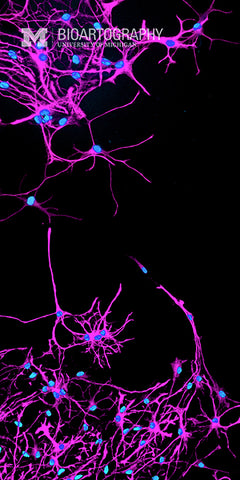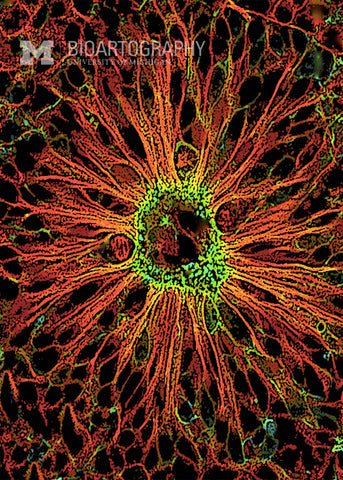

Kristen Verhey, Ph.D., Associate Professor, Department of Cell and Developmental Biology, University of Michigan Medical School
The human brain contains approximately 100 billion neurons (or nerve cells). Neurons are information messengers; they consist of a cell body (or soma) from which the input and output processes extend. The input or receiving processes are the branching, tree-like dendrites whereas the output or transmitting processes is the cable-like axon. Many neurodegenerative diseases arise from genetic or environmental lesions that result in an inability to transmit proper signals. These neurons from the hippocampus of a developing mouse have been chemically tricked during their developmental process of forming axons and dendrites. In normal cells, the axonal (green) and dendritic (red) components segregate into separate processes that grow in straight trajectories and connect to other neurons. In these cells, the axonal and dendritic components are mixed together and the processes curl around themselves rather than reach out to connect with other neurons.



